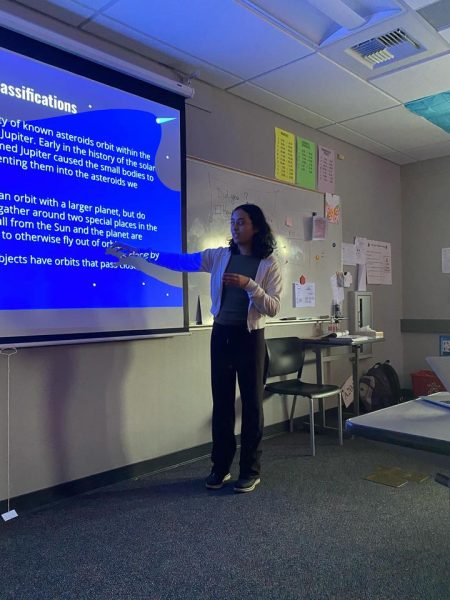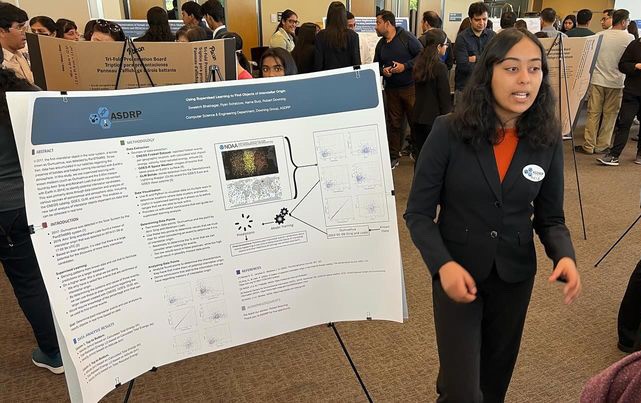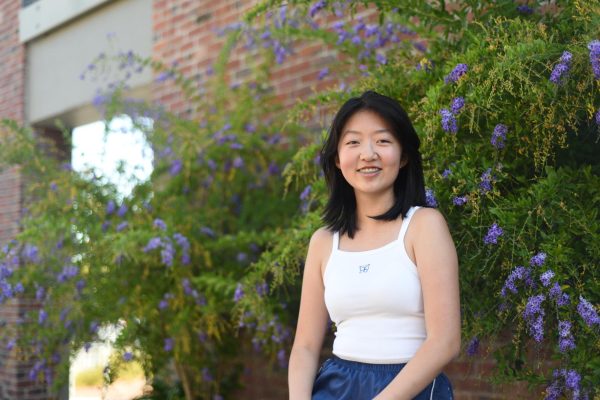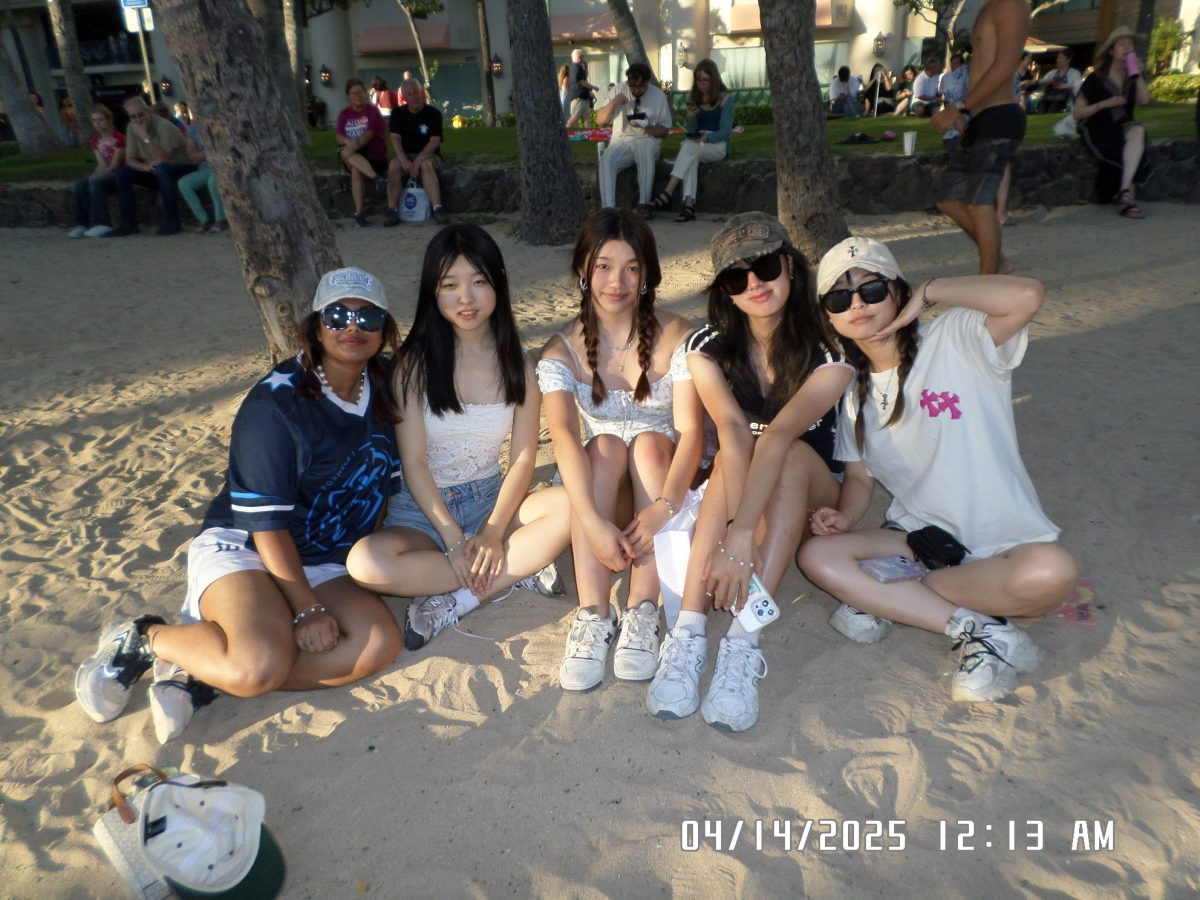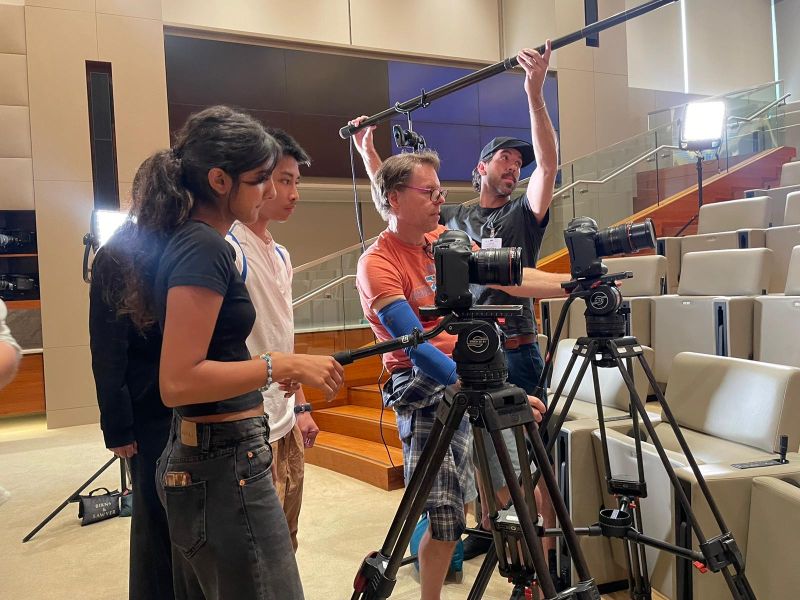Junior Aarna Burji sat cross-legged on her grandmother’s carpet, eagerly awaiting her favorite bedtime story: the tale of Lord Krishna — Hindu god of compassion and love — and the universe.
The story starts with Lord Krishna’s mother believing that he had swallowed dirt. She told him to open his mouth so she could confirm her suspicions. However, instead of dirt, his mother found the whole universe — the Earth, all the stars and outer space — inside Lord Krishna’s mouth.
Aarna recalls constantly asking her grandmother questions about this story and the extent of the universe as a result of her struggle to comprehend the infinite expanse of outer space. Aarna’s older brother, Aman Burji, also remembers being captivated by the stories told by their grandmother.
“I can definitely see how Aarna [developed] a detailed interest in astronomy from those stories,” Aman said. “My grandparents are definitely more religious. We have a Hindu culture [and] most of our family practices Hindu traditions, [so] a lot of Indian mythologies and creation stories are things that [our] grandparents share with us.”
Aarna herself is not a practicing Hindu, so she uses astronomy as a way to connect with her heritage. There is a close bond between astronomy and the Hindu religion. Indian astronomy dates back to 1500 B.C. and is widely used in many aspects of the culture. For example, married couples are asked to look for binary stars Arundhati (Alcor) and Vasishta (Mizar) for good luck in marriage.
Aarna believes her culture is heavily influenced by astronomy, and her close friend junior Riddhi Shedge agrees. Shedge recalls hearing the “exact same [stories]” from her parents and being equally intrigued. To Aarna, who had always been concerned about her life’s calling, astronomy was more than just an interest.
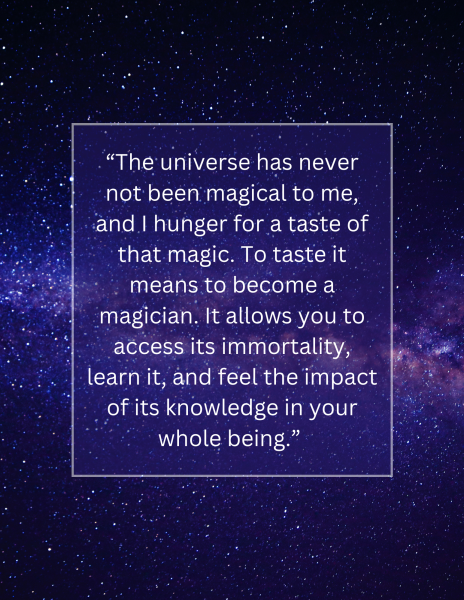
“I thought astronomy was something really meaningful because you got to look at something unexplored, something no one’s ever touched before and you got to build off of that knowledge,” Aarna said. “There’s so much to discover and learn that can contribute to so many things on Earth and [the] exploration of space.”
Aarna vividly remembers learning about India’s rover, Chandrayaan-3 — or “mooncraft” in Sanskrit — and the flood of emotions that came when she heard of the rover landing on the moon. She was in awe of the engineering and precision it took to build it, and she believes that Chandrayaan should be a “source of pride for the [Indian] community.”
“The fact that Chandrayaan is in Sanskrit — the language of a lot of Hindu texts where I’ve read about the Hinduism view on the universe and the creation of our universe and what we mean to this universe —unified my love for astronomy with my love for my culture,” Aarna said.
Although Aarna is not currently landing rovers on the moon, she is still leaving positive impacts on her local community, as she and Shedge are the founders of the Astronomy Club. This is not the only thing they share, as aside from starting an astronomy summer camp for young children, they also attended COSMOS, a STEM-focused summer program.
“During the lectures I was pretty quiet because there [were] so many [unfamiliar] people and professors and it was a new environment,” Shedge said. “I remember the professors asking, ‘Who wants to do this first?’ It was the first day and [I] remember [that] Aarna was so excited. She’s like, ‘I’ll go, I’ll do it.’ I was like, ‘Wow.’ Her confidence really gave me confidence to also participate more in the lectures and be more comfortable.”
As a result of her confidence and curiosity, Shedge is certain that Aarna will succeed in whatever path she decides to pursue. Despite this, Aarna’s fascination with the cosmos has always led her back to astronomy where she studies the bounds of the universe through the gaze of a scientist and with the curiosity of a child listening to her grandmother’s stories.
“I’ve always associated love and my passion for my culture with my love and my passion for astronomy,” Aarna said. “I feel like I was only able to see astronomy as magically as I did because of the stories [from my culture] about our purpose in our universe, which [is] a huge part of Indian culture.”
